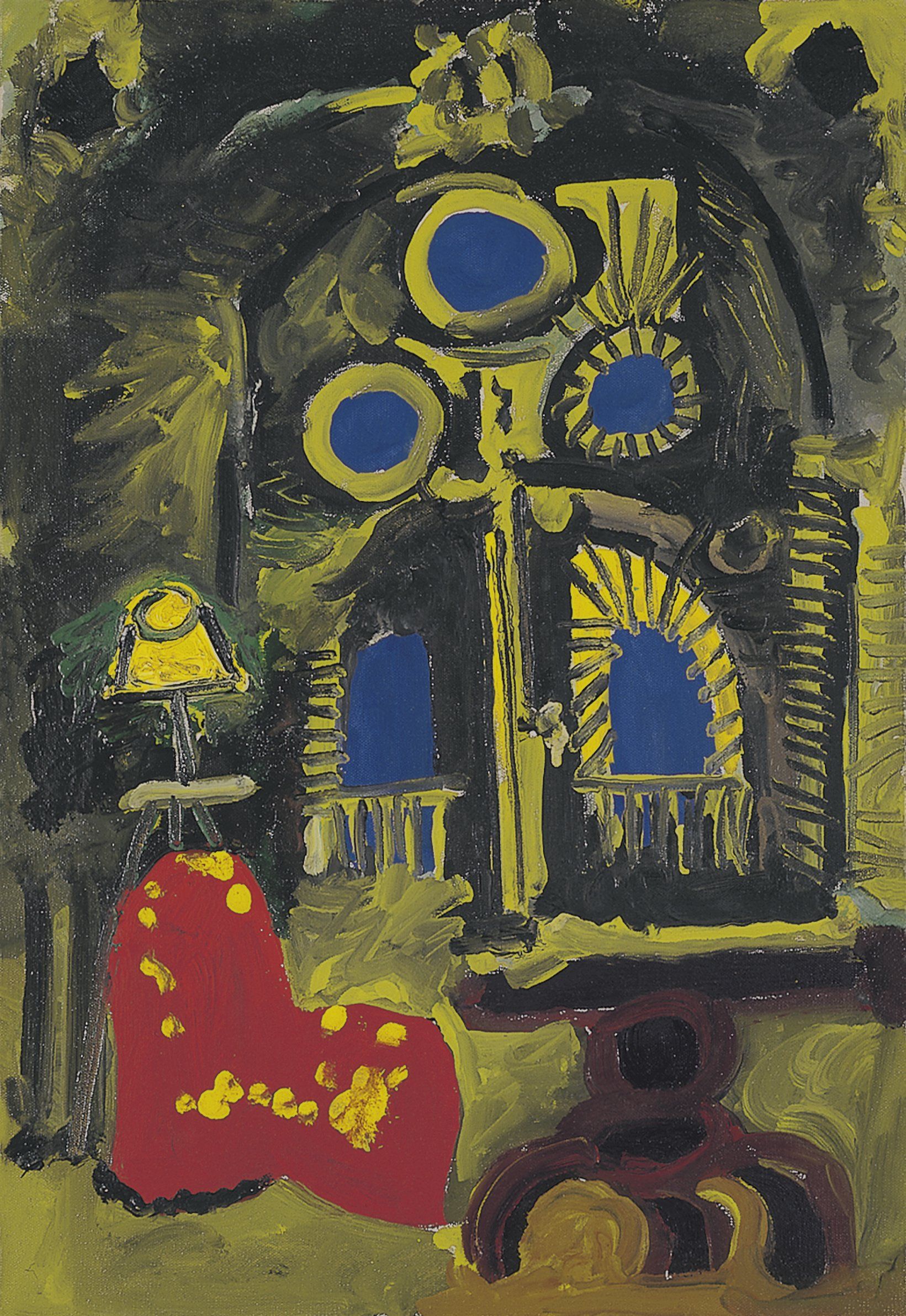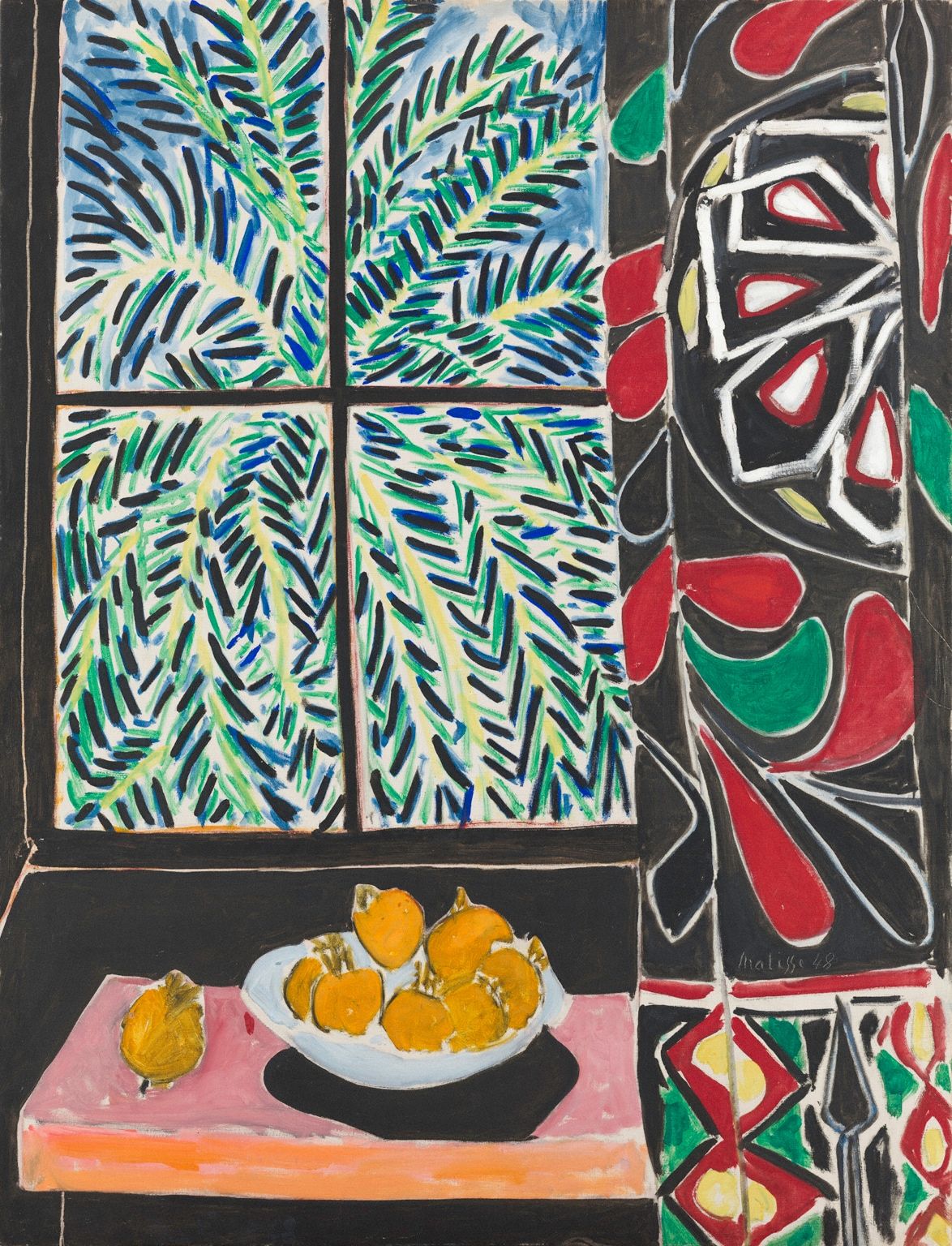
Pablo Picasso (1881-1973). La Californie. Interior with Red Armchair, Cannes, 17 June 1958. Museo Picasso Málaga. Photo: Rafael Lobato © Museo Picasso Málaga © Succession Pablo Picasso. VEGAP, Madrid, 2024
La Californie. Interior with Red Armchair
Jun 17, 1958
Sixty-six years ago, on 17 June 1958, Pablo Picasso created the oil on canvas La Californie. Interior with Red Armchair.
'Throughout his life, Picasso painted views of the places where he lived and worked. He not only documented the interiors of his homes and studios but also included the tools he used—brushes and paints—as well as his own artworks.
Picasso settled into La Californie, his residence in Cannes, in the summer of 1955 and painted this interior scene Three years later as part of a series of thirteen paintings executed between 15 June and 12 July 1958. Earlier interpretations of his working environment, particularly in the 1920s, 1930s, and 1940s, were defined by rigid geometric construction and a high degree of abstraction, whereas the scenes of the 1950s were characterized by a stylized naturalism similar to Henri Matisse’s decorative interiors.
 Pablo Picasso (1881-1973). The Studio, 1928. Peggy Guggenheim Collection, Venice. Solomon R. Guggenheim Foundation, New York. © Stimmungsbilder1/Alamy Stock Photo © Succession Pablo Picasso. VEGAP, Madrid, 2024
Pablo Picasso (1881-1973). The Studio, 1928. Peggy Guggenheim Collection, Venice. Solomon R. Guggenheim Foundation, New York. © Stimmungsbilder1/Alamy Stock Photo © Succession Pablo Picasso. VEGAP, Madrid, 2024
In fact, some historians see the series from La Californie as an homage to Matisse, who had died in 1954. Jean Boggs compares Picasso’s “interior landscapes” to the ones that Matisse made of his villa, Le Rêve, in Vence between 1946 and 1948, as well as the studio interiors that Georges Braque began in 1952. After Matisse’s death, “Picasso painted his «interior landscapes» with views through the elaborately curving Art Nouveau windows to the palm trees behind, which make the interiors by both Matisse and Braque seem enclosed”.
 Henri Matisse (1869-1954). Interior with Egyptian Curtain, 1948. The Phillips Collection, Washington © The Phillips Collection, Washington, DC © Succession H. Matisse/VEGAP, Malaga, 2024
Henri Matisse (1869-1954). Interior with Egyptian Curtain, 1948. The Phillips Collection, Washington © The Phillips Collection, Washington, DC © Succession H. Matisse/VEGAP, Malaga, 2024
This colorful nigh scene recalls the famous indoor-outdoor scenes of Saint-Raphaël, when in 1919 Picasso began to combine man-made decorative interiors with exterior views of nature. Here, the artist shares his private world in both a realistic and an intimate manner. In this respect, the present work reflects the warm, bourgeois settings painted by Pierre Bonnard and Édouard Vuillard in the nineteenth century during their Nabis period; their domestic interiors were characterized by flat decorative patterns of bright colors, often confined like cloisonné.
 Pablo Picasso (1881-1973). Still Life on a Circular Table in Front of an Open Window, 7 November 1919. Museo Picasso Málaga © Museo Picasso Málaga © Succession Pablo Picasso. VEGAP, Madrid, 2024 and Pierre Bonnard (1867–1947). Window with a Dog, Le Cannet, 1927. Private collection © ARTGEN/Alamy Stock Photo © Pierre Bonnard, VEGAP, Malaga, 2024
Pablo Picasso (1881-1973). Still Life on a Circular Table in Front of an Open Window, 7 November 1919. Museo Picasso Málaga © Museo Picasso Málaga © Succession Pablo Picasso. VEGAP, Madrid, 2024 and Pierre Bonnard (1867–1947). Window with a Dog, Le Cannet, 1927. Private collection © ARTGEN/Alamy Stock Photo © Pierre Bonnard, VEGAP, Malaga, 2024
The Museum possesses additional Images of La Californie: one six-color lithograph and nine drawings, all from 1955. As Klaus Gallwitz aptly remarked, the theme of the studio is a constant in Picasso’s œuvre and, because of its personal, self-indulgent subject, is comparable to his many self-portraits in which the self-analyzing artist looks at the world by looking at himself and his world’.

Text: GIMÉNEZ, Carmen (ed.). Collection Museo Picasso Málaga. Malaga: Museo Picasso Málaga, 2003, pp. 149-150.
More on Picasso's Universe
Related Exhibitions

Pablo Picasso: Structures of Invention
Unity of a Life’s Work